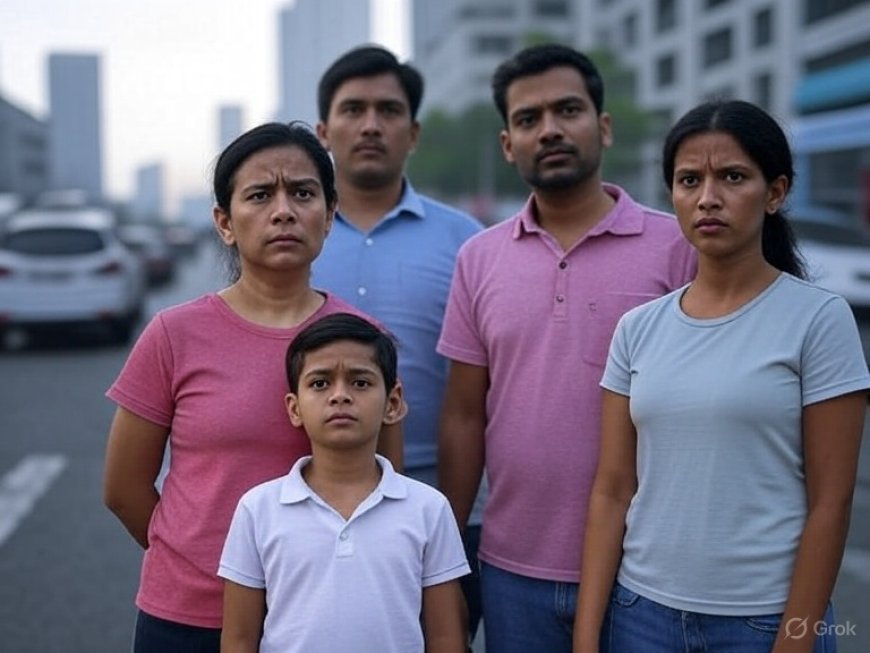Home Ownership Slips Further Out of Reach: Even Top Earners Struggle to Buy Homes in Cities Like Mumbai and Bhubaneswar
Home affordability worsens in Indian cities like Mumbai and Bhubaneswar. Even top earners require decades of savings to buy homes, as real estate prices soar in 2025.

June 26, 2025 — Despite economic growth, rising salaries, and a post-pandemic real estate boom, home affordability in India’s urban centres has hit a new low. Cities such as Mumbai, Bhubaneswar, Pune, and Bengaluru are witnessing property prices so steep that even top-earning professionals find themselves unable to purchase homes without committing decades of savings or taking on enormous debts.
This trend, driven by soaring land prices, stagnant wage growth, and shrinking apartment sizes, is now seen not only in metros like Mumbai but also in emerging cities like Bhubaneswar — once considered relatively affordable.
Mumbai: The Perpetually Elusive Dream
India’s financial capital, Mumbai, continues to rank among the least affordable housing markets in the world, according to the 2024 Knight Frank Affordability Index. The index showed that a household in Mumbai requires nearly 12 years of total income — without spending a rupee on anything else — to purchase a modest 2BHK home within city limits.
Despite marginal improvements in home loan interest rates and government-backed incentives under PMAY (Pradhan Mantri Awas Yojana), affordability has worsened due to:
-
Skyrocketing property prices, especially in suburbs like Andheri, Goregaon, and Thane
-
Limited new affordable housing projects amid a surge in luxury developments
-
High stamp duties and registration fees, which add significantly to upfront costs
According to Anarock Property Consultants, the average cost of a mid-sized apartment in Mumbai has crossed ₹2 crore, while the median monthly household income stands around ₹1.5 lakh for upper-middle-class professionals.
Bhubaneswar: From Affordable to Aspirational
In an unexpected shift, even Bhubaneswar, the capital of Odisha and long known for its affordable real estate, has seen housing costs spiral out of proportion to local incomes.
The NAREDCO-JLL Housing Affordability Report 2025 shows that:
-
A standard 3BHK in central Bhubaneswar now costs over ₹1 crore
-
Top private sector earners would need 18–22 years of saving 30–40% of their salaries to afford down payments
-
Rental yields remain modest (~2.1%), making ownership less attractive as an investment
The rise is largely due to IT expansion, government infrastructure projects, and land acquisition challenges. Many residents are turning to outskirts like Jatani, Chandaka, and Khordha, where prices are lower but infrastructure remains underdeveloped.
For more in-depth housing trends, explore the JLL India Real Estate Insights.
Top Earners, But Still Tenants
It’s not just middle-class families feeling the crunch. Even senior tech professionals, doctors, and CXOs in cities like Pune, Hyderabad, and Bengaluru are finding it difficult to afford housing without substantial parental support or dual-income strategies.
“You can earn ₹3 lakh a month and still be renting a 2BHK flat in Whitefield or Hinjewadi. The EMIs for a ₹1.2 crore apartment would swallow 50% of your salary for 20 years,” says Shreya Mishra, a financial planner in Pune.
This reflects a troubling income-to-house-price ratio in India’s real estate hotspots, with most metros seeing a ratio between 8:1 and 12:1, whereas global benchmarks for healthy affordability hover around 3:1 to 5:1.
To understand more about optimal home budgeting, refer to the RBI Financial Literacy Guide.
Policy Gaps and Market Realities
Despite numerous government programs — such as credit-linked subsidy schemes (CLSS), reduced GST on affordable homes, and RERA (Real Estate Regulation Act) — home affordability remains skewed:
-
Affordable housing is often located far from city centres, lacking schools, hospitals, and transit
-
Developers continue to prefer premium and ultra-luxury segments due to higher profit margins
-
Rental markets remain under-regulated, offering no long-term housing security for tenants
Urban development experts are now advocating for stronger rental housing policies, co-living incentives, and state-supported land banks to bring prices under control.
The Ministry of Housing and Urban Affairs (MoHUA) has acknowledged the challenge and plans to revise urban housing guidelines in FY 2025–26 to address income-based affordability metrics.
India’s Millennials Rethink Homeownership
With home prices escalating and job flexibility increasing, many young Indians are questioning the very premise of ownership. Instead of investing in long-term housing, there’s a growing trend of:
-
Renting close to work to save commute time
-
Investing in REITs (Real Estate Investment Trusts) for better liquidity
-
Delaying ownership until marriage or relocation abroad
“Owning a house used to be a marker of stability. Now it feels more like a financial trap,” says Ritesh Menon, a 29-year-old product manager based in Bengaluru.
According to a 2024 survey by Magicbricks, 56% of millennials (age 25–38) prefer to rent long-term rather than commit to home loans with 20–25 year tenures.
Conclusion: A Market In Need of Reform
India’s housing market is at a crossroads. The gap between property prices and income levels is widening, not just in metros but even in Tier-2 cities that were once affordable alternatives. Without bold policy reform, increased supply of truly affordable homes, and better urban infrastructure, the dream of home ownership will remain just that — a dream — for millions.














